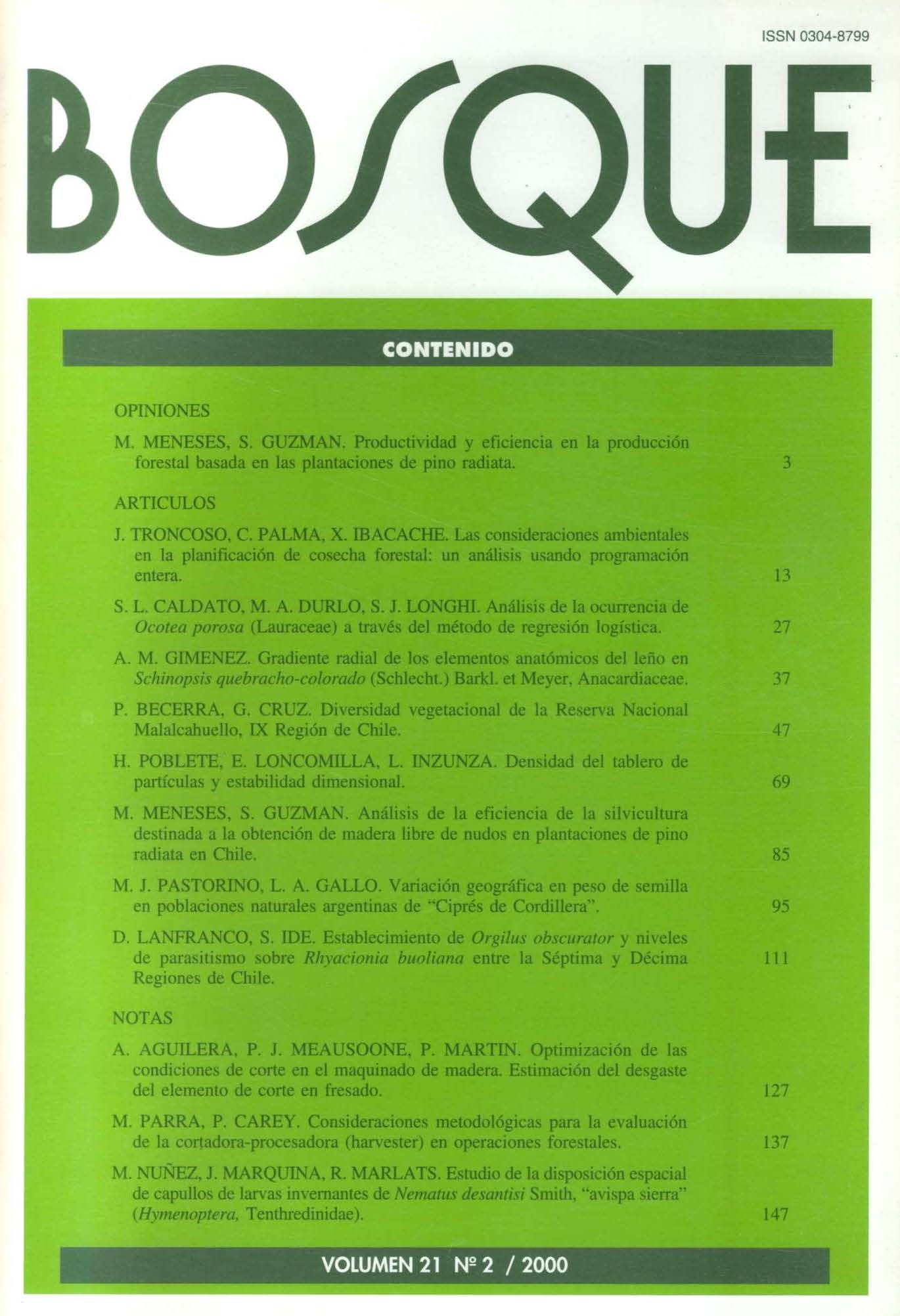Main Article Content
Dec 29, 2000
Abstract
During 1995 and 1996, the levels of establishment and parasitism by Orgilus obscurator Ness. were evaluated. An increase in Rhyacionia buoliana population density and a decrease in parasitism levels by O. obscurator from southern to northern provinces were detected. The best parasitism results were found in the Xt h Region, together with the lowest populations of R. buoliana. The VIIIth Region, which has the main concentration of pine resources, currently exhibits the greatest problem, as the parasite populations are high (over 10,000 larvae per hectare). The percentages of parasitoid establishment were 35% in 1995 and 24% in 1996. In the same region, parasitism values fluctuate between an average of 1% and 11%. A statistical analysis found significant differences depending on the inoculation tactics and the date when they were implemented. Better results were obtained with implanted parasite larvae, principally those released several years ago.


